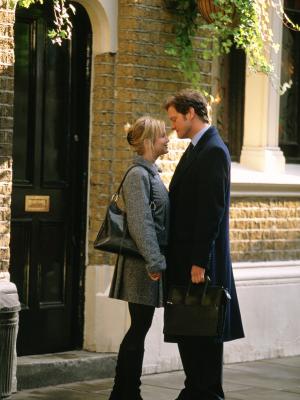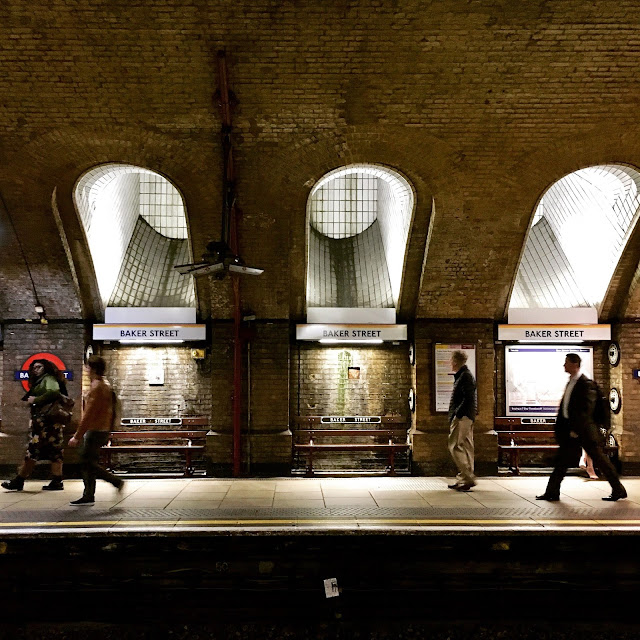Above Ground on the London Underground—Day 42: Cockfosters .... the end of the Piccadilly Line!
Vintage Roundel, Turnpike Lane
If it's Friday we must be back in London. Every Friday I take a virtual walking tour ‘above ground’ on the London Underground. Using my Tube guide & my fitbit® device, my goal is to walk 10,000 steps a day roughly following along the Underground route, reporting back here on Fridays with my findings. Here are the previous days. We're wrapping up our walk tracing the path of the Piccadilly Line. This is Day 42.
Turnpike Lane image via modernarchitecture.com
Turnpike Lane Station interior image via openbuildings.com
Bounds Green via wikipedia
During WWII Bounds Green station was used as an air raid station. In 1940, during the blitz, the Germans dropped a bomb on the neighborhood to the north of the underground, causing a portion of the station to collapse and killing seventeen people. I’m struck by the cheerful expressions on the everyone’s faces. Chalk it up to that stiff British upper lip?
Arnos Grove Station via modernlondonarchitecture.com
Between Bounds Green and the Southgate Station is Arnos Grove, recognized by the Guardian as one of London’s 12 Great Modern Buildings. Also designed by Charles Holden, this station was inspired by the Swedish architect Gunnar Asplund design for the Stockholm City Library, below.
Stockholm City Library
Southgate Station image via wikipedia
Next up, the Southgate Station. Also designed by Charles Holden, Southgate is an example of the art deco/streamline moderne architectural style. If you visit my Instagram, I’ve got a local and much later example of streamline moderne, the Vienna Bakery in Santa Monica which dates to 1946. I love the curved lines of streamline moderne, emulating the ocean liners of the period.
image via Catherine Martin/Wikipedia
The interior, including escalators, has been remodeled with a mind to preserve its historical details. The station is often used in period films such as 1999’s The End of the Affair.
Back to the boxlike style Charles Holden’s Oakwood station is a particularly bold interpretation when you see the interior.
image via themodernist.co.uk
Similar to the Turnpike Lane station, the Oakwood Station interior has a great many more windows and while extremely modern, mirrors classical architecture.
Cockfosters image via LondonDrum.com
That brings us to the end of the line. Cockfosters, the northern most station of the Piccadilly Line, also designed by Charles Holden in the European Modern Style, using brick, glass and reinforced concrete. Much less grand than Arnos Grove or Turnpike from the outside, the inner structure with its concrete canopy construction is massive, modern and quite lovely in how it allows the light and air to come in at both ends.
And now, after 42 posts and almost a year, I’ve taken you with me along my journey above ground on just one of London’s underground routes: Piccadilly, from Heathrow where I landed back in October of 2015 with Daniel Craig and Colin Firth to today’s solo trip to Cockfosters. I hope you’ve enjoyed the journey as much as I have. Now what? Which of the remaining dozen Underground lines to follow and where to start? I can’t believe it’s taken me this long just to cover one of the lines; I wonder how old I’ll be when I’m done!
Counting the Fitbit steps
Day 1-41: 295,190 steps/131 miles
Day 42: Beaconsfield Hotel 18,000 steps /6.6 miles
Total Imaginary Miles to Date 313,190 steps/137.6
Days 1 —41
It's British Isles Friday when I link up with Joy Weese Moll I blame Joy for getting me started on this crazy journey!
Day 42: Beaconsfield Hotel 18,000 steps /6.6 miles
Total Imaginary Miles to Date 313,190 steps/137.6
Days 1 —41
It's British Isles Friday when I link up with Joy Weese Moll I blame Joy for getting me started on this crazy journey!















